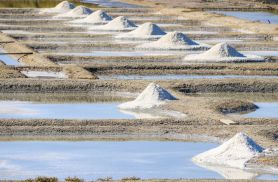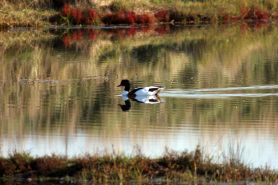A preserved environment
On the edge of a nature reserve
-
-
Kerbihan Point and the customs officers’ paths
-
-
-
-
-
When you take a walk to the left of the beach you will come across a path which, through the rocks, leads to Kerbihan Point, a peninsula in the bay of Quiberon at the entrance to La Trinité-sur-mer’s harbour. This path is more commmonly known as the « sentier des douaniers » (customs officers’ watch path) as at the tip of the peninsula you will come across an intruiging house with a roof in the shape of stairs (now private property) where the customs officers or « gabellous » (salt tax collectors) from la Trinité looked out for salt smugglers. All around you are landscapes of moors, hawthorns and gorse bushes where land art enthusiasts have transformed pebbles into works of art.
-
-
-
-
-
Kervilen salt marshes
-
-
-

Indeed, Kervilen salt marshes are located right next to the campsite. The salt marshes were, as of the 18th century, one of the largest and most profitable in La Trinité sur Mer, hence the customs officers’ barracks in the village and a lookout at the harbour entrance. In the 20th century, this activity gradually declined and the last « saltworker » left the site around 1960.
In 1984 the Morbihan department became the owner of the Kervilen site which stretches over 61 acres and is comprised of salt marshes, a patchwork of natural landscapes like dunes, mudflats, meadows along the footpaths lined with tamarix and wild sloe.
In 2011 a saltworker reconstructed one of the basins to produce sea salt which is sold in various grocery stores in La Trinité and on market stalls.
-

At the same time, work was carried out to improve the birds’ tranquillity and to develop a sea
grass bed to attract fish, crustaceans and birds.
Over 250 plant species and numerous animals can be observed including birds such as avocets, egrets, common moorhens and a variety of ducks…
Other work carried out since the reconstruction of the salt marshes : management of the water level, attracting more birds, maintaining the hydraulic system, rebuilding the clay bridges.
And the result is very positive as numerous species now flock to the various basins throughout the seasons (brants, avocets, sandpipers, ducks such as teals, mallards, common shelducks, egrets, ibis, spoonbills…)
-
-
-








